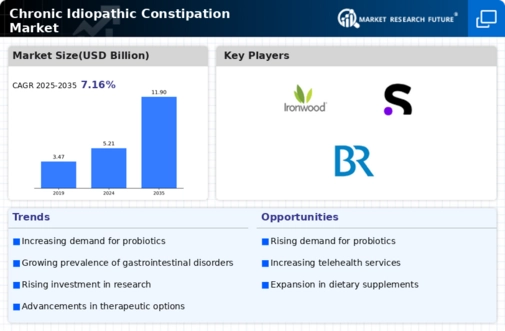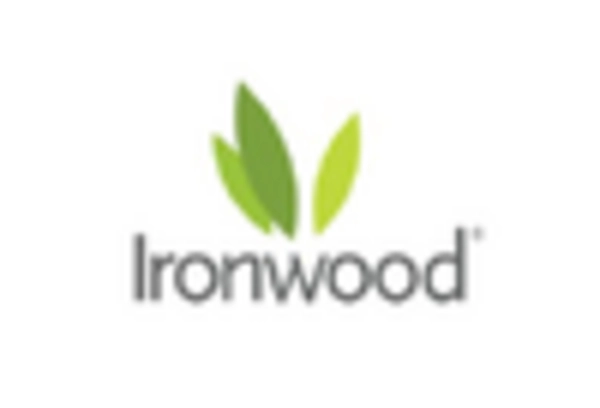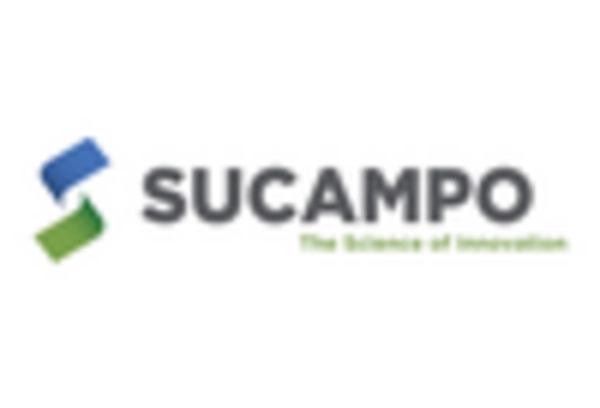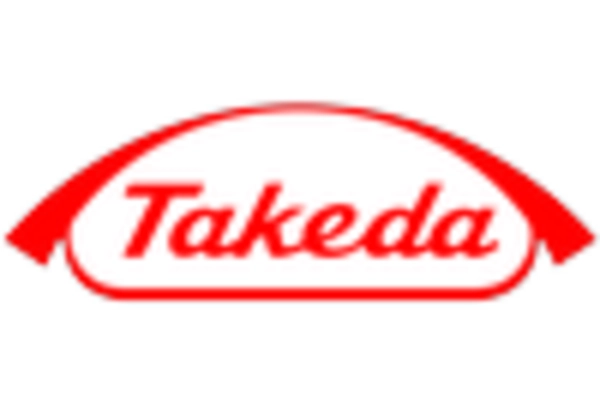Market Analysis
In-depth Analysis of Chronic Idiopathic Constipation Market Industry Landscape
Market dynamics of chronic idiopathic constipation (CIC) have been influenced by the increasing cases of gastrointestinal diseases, medical improvements and global digestion health responses making it a complex one. CIC has gained recognition within the medical community leading to changes in diagnostic and therapeutic approaches toward this disease. This has led to its increased prevalence worldwide and therefore, demand for accurate diagnosis and efficient treatments that will focus on the specific challenges posed by chronic nature of the illness.
One of the main drivers influencing CIC markets is increasing awareness of functional GI disorders requiring diagnostic interventions tailored towards assessing relevant patient history. As our knowledge about medicine improves, there is a growing tendency for focusing on the intricacies surrounding CIC including its effect upon patient’s quality of life. Colonic transit studies, anorectal manometry, and pelvic floor imaging are some advanced diagnostic tools designed to identify possibilities behind this problem and direct therapy choices.
Technological advancements play important roles in market dynamics especially diagnosis as well as treatment of CIC. The advent of advanced imaging modalities also allows better understanding of colonic motility as well as function. There are innovative pharmaceutical therapies like agents that increase stool frequency and consistency which serve as effective management options against symptoms associated with CIC patients. Moreover, lifestyle modifications and behavioural therapies included into treatment plans take care of different factors linked to CIC such as eating habits or exercise pattern.
The growing concerns about digestive health worldwide and increased prevalence rate regarding functional Gastrointestinal Disorders have accelerated research activities in regard to CIC globally. Pharmaceutical companies work hand-in-hand with hospitals and research institutions to develop novel therapeutic interventions for individuals who suffer from CIC condition. Lubiprostone and linaclotide plus new drugs targeting specific receptors implicated in gastrointestinal motility are evolving into key treatment modalities aiming at relieving symptoms while improving general wellbeing among patients with CIC. These new therapies contribute significantly to positive market dynamics observed in managing conditions associated with CIC.
The competitive landscape for the treatment of CIC consists of pharmaceutical companies specializing in Gastroenterology, medical device manufacturers and research institutions that are engaged in discovering innovative treatment modalities. The market dynamics can be well understood by various clinical trials and research activities conducted to identify new therapeutic approaches. Cooperation among stakeholders is essential in progressing CIC studies as it fosters innovation and ensures availability of efficient therapeutic options.
Market dynamics challenges include varied presentations of CIC ranging from mild forms of the disease to severe cases and its pathogenesis remains ill-understood. This means that there are different factors that contribute to development of CIC like altered GI motility, visceral hypersensitivity, or psychosocial aspects, thus requiring customized diagnostic and therapy approaches. Besides addressing patients’ concerns such as medication tolerability as well as compliance, which are specific to each patient, medical practitioners have challenges ahead. Consequently, such obstacles would require constant search for knowledge on this topic, thorough education of individuals who suffer from it and personal management plans aimed at regulating CIC symptoms.

















Leave a Comment